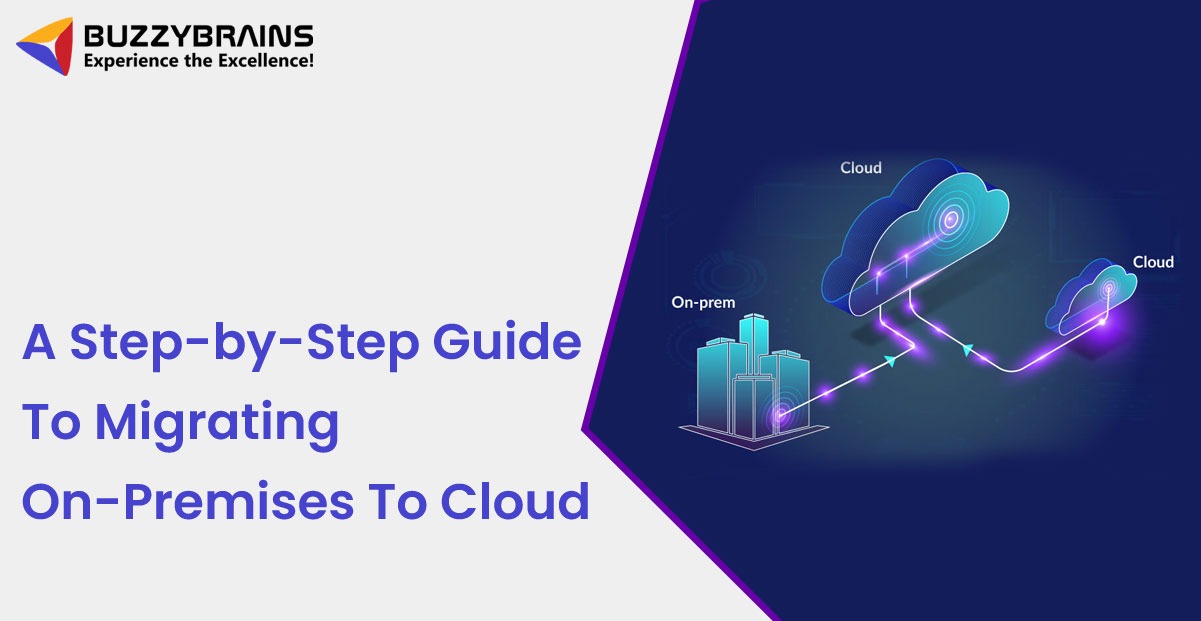On-Premises to Cloud Migration Guide

The idea of on-premise to cloud migration has become a strategic necessity for businesses seeking enhanced scalability, cost savings and operational flexibility. On-premise systems often demand high maintenance and infrastructure costs, which can hinder growth. The shift to the cloud offers access to advanced technologies, seamless collaboration and robust data security, enabling organisations to innovate and adapt quickly.
This guide details the steps for a smooth migration process, beginning with an assessment of existing systems to identify workloads suitable for the cloud. Choosing the right cloud model public, private, or hybrid is crucial, as is selecting a reliable provider. Data security and compliance remain top priorities throughout the transition. A phased migration approach minimises disruptions by addressing workloads incrementally. Testing ensures functionality, while monitoring and optimisation post-migration deliver continuous improvements.
Therefore, understanding why moving from on-premise to the cloud involves evaluating the benefits, including reduced IT expenses, disaster recovery capabilities and scalability on demand. This transition empowers businesses to modernise infrastructure and align with evolving technological demands. By following a systematic approach, organisations can maximise the advantages of cloud solutions, ensuring a seamless transition that supports long-term goals.
Furthermore, this particular blog will take you through a reading journey which will fill your mind with significant as well as needful knowledge regarding every aspect of migration on premises to the cloud in a detailed manner. So let’s dive in!
What Are The Multiple Types Of Cloud Migration?
- Rehosting (Lift and Shift): This method involves moving applications and data to the cloud without making significant modifications. It’s the fastest option, suitable for businesses that need a quick cloud adoption with minimal downtime.
- Replatforming (Lift, Tinker and Shift): In this approach, applications are slightly modified to better utilise cloud environments, but their core structure remains the same. This method provides a balance between speed and cloud optimisation.
- Refactoring (Rearchitecting): Refactoring needs a complete redesign of the application in order to take full advantage of cloud-native features for example auto-scaling, advanced analytics as well as performance optimisation. It’s something more time-consuming option but on the other hand, it delivers significant long-term advantages.
- Repurchasing: Businesses using legacy on-premise applications may switch to cloud-based Software-as-a-Service (SaaS) solutions, eliminating the requirement for maintaining on-premise systems. This method is perfect for organisations which are looking to simplify their IT infrastructure.
- Hybrid Migration: A hybrid migration includes managing a mixture of cloud as well as on-premise environments. This strategy eventually allows businesses in order to keep sensitive data on-premise while forwarding less critical workloads to the cloud while offering flexibility and control.
- Retiring: Once the entire critical systems are migrated, organisations may select to decommission legacy systems that are no longer requirements for that matter. This reduces complexity and costs, optimising cloud resources.
Each type of migration provides specific advantages, which depend on the institution’s resources, goals and also IT requirements. Carefully choosing the appropriate method assures a smooth and also cost-effective transition to the cloud.
Benefits Of Migrating On-Premises To Cloud
Migrating from on-premises to the cloud offers significant advantages for businesses searching to develop their proficiency, security and also scalability. Here’s why the shift is a game-changer:
- Cost Efficiency
- Cloud solutions reduce the need for costly hardware and infrastructure maintenance.
- With pay-as-you-go models, businesses only pay for the resources they use, lowering operational costs.
- Scalability
- The cloud allows businesses to quickly scale up or down based on demand, without upfront capital investment.
- This flexibility helps organisations grow while controlling costs.
- Flexibility and Accessibility
- Cloud-based systems can be easily accessed from any location with an internet connection while enabling remote work as well as collaboration.
- Real-time access to data and applications illustrates greater flexibility in how teams actually operate.
- Enhanced Security
- Leading cloud providers give state-of-the-art security measures which include encryption and also multi-factor authentication at the same time.
- Compliance with global data protection regulations for example General Data Protection Regulation (GDPR) provides assurance to secure cloud environments.
- Disaster Recovery
- The cloud makes it sure of better disaster recovery options by having proper maintenance off-site backups, which decreases the risk of losing data.
- With automated backup systems, recovery time is minimised, ensuring business continuity.
- Faster Innovation
- Migrating to the cloud gives immediate access to cutting-edge technologies for example artificial intelligence and also machine learning.
- Institutions can leverage all these innovations in order to drive faster product improvement as well as develop business operations for that matter.
- Streamlined Cloud Migration Process
- The cloud migration process is structured to minimise disruption, often involving phased migrations.
- Cloud service providers offer migration tools that simplify the transition, helping businesses avoid costly mistakes.
Embracing cloud migration results in improved efficiency, agility and future-proofing of business operations. Also apart from the mentioned benefits, there are other beneficial aspects as well which make the cloud migration concept more significant and effective in the long run.
Multiple Steps To Migrating On-Premises To Cloud
The entire concept of migrating from on-premise to cloud computing needs careful planning as well as execution. Below are the major steps which you can follow to get a successful on-premise to-cloud migration strategy:
- Assessment and Planning
- Arrange a thorough evaluation of existing systems as well as workloads. Choose the applications along with data that can be moved to the cloud directly.
- Set particular objectives for migration, for example, cost savings, performance improvement and sometimes scalability.
- Selecting the Right Cloud Model
- Decide whether a public, private or hybrid cloud model properly fits the organisation’s actual requirements.
- Select a reliable cloud service provider that lines up with business goals, scalability requirements as well as security needs.
- Data Migration from On-Premise to Cloud
- Making a data migration from on-premise to a cloud helps in order to ensure data integrity and security as well as minimal downtime at the time of the transfer.
- Start with migrating non-critical data, followed by mission-critical systems for that matter. Testing is essential to ensure data consistency.
- Application Migration
- Choose the appropriate migration approach which includes rehosting, refactoring or rearchitecting and that will depend on the application’s complexity level.
- Ensure compatibility with cloud environments and test applications thoroughly to ensure proper functionality.
- Security and Compliance
- Execute strong security measures for example encryption and access control as well as compliance with required standards.
- Evaluate risks along with deploying proactive security protocols in order to protect data in time and after migration.
- Optimisation and Cost Management
- Monitor cloud usage and optimise resources to ensure cost efficiency.
- Using auto-scaling as well as required-based provisioning to decrease unnecessary expenses while maintaining performance in the long run.
- Ongoing Monitoring and Management
- Executing monitoring tools in order to track performance, security breaches as well as resource utilisation in real-time.
- Regularly update cloud services to accommodate business needs and technological advancements.
- Training and Support
- Provide training to staff on cloud tools, best practices and security measures.
- Set up continuous support for troubleshooting and cloud system maintenance.
By following this migrating to cloud computing steps, organisations can streamline the migration process, ensuring a smooth transition with minimal risks.
How BuzzyBrains Helps You
BuzzyBrains stands out among cloud computing companies in India by offering tailored solutions that enable businesses to leverage cloud technology efficiently. Here’s how BuzzyBrains supports clients:
- Cloud Strategy Consultation
- Expert consultation to help businesses define cloud goals and identify the most effective cloud model for their needs.
- End-to-End Cloud Services
- From initial planning and design to deployment, BuzzyBrains ensures seamless cloud adoption for enterprises.
- Custom Cloud Solutions
- BuzzyBrains designs custom cloud infrastructures that align with specific business requirements, ensuring scalability and security.
- Data Migration Services
- Specialises in smooth data migration from on-premise to cloud, ensuring no data loss, minimal downtime and security compliance.
- Cloud Security and Compliance
- Implements top-tier security protocols and ensures compliance with industry standards, safeguarding client data in the cloud.
- Cost Optimisation
- Helps businesses optimise cloud resources to reduce costs, leveraging flexible, pay-as-you-go models and automated scaling options.
- Ongoing Support and Management
- BuzzyBrains provides continuous monitoring, management and optimisation of cloud systems to ensure optimal performance and uptime.
- Cloud Application Development
- BuzzyBrains also provides cloud application development to modernize legacy systems, ensuring they are future-proof and scalable in the cloud.
- Training and Skill Development
- Provides cloud-related training in order to ensure internal teams are totally equipped for managing and leveraging cloud platforms more efficiently.
With a proven track record as well as expertise in cloud technologies, BuzzyBrains assists businesses in transitioning to the cloud, developing operations and also staying ahead of the competition. BuzzyBrains as a technological company is one of the most popular technological organisations in India which provides a lot more other assistance as well as per its client needs.
Conclusion
In order to conclude, it can be stated that on-premise to-cloud migration provides multiple benefits which include cost savings, scalability as well as developed security. With the help of transitioning to the cloud, all businesses can very easily optimize their entire operations and also gain access to the most improved technologies and ensure flexibility for that matter. With the help of proper planning, migration can be a seamless procedure while leading to greater proficiency as well as growth in future. Embracing cloud solutions is a strategic step toward staying competitive in today’s digital landscape.
